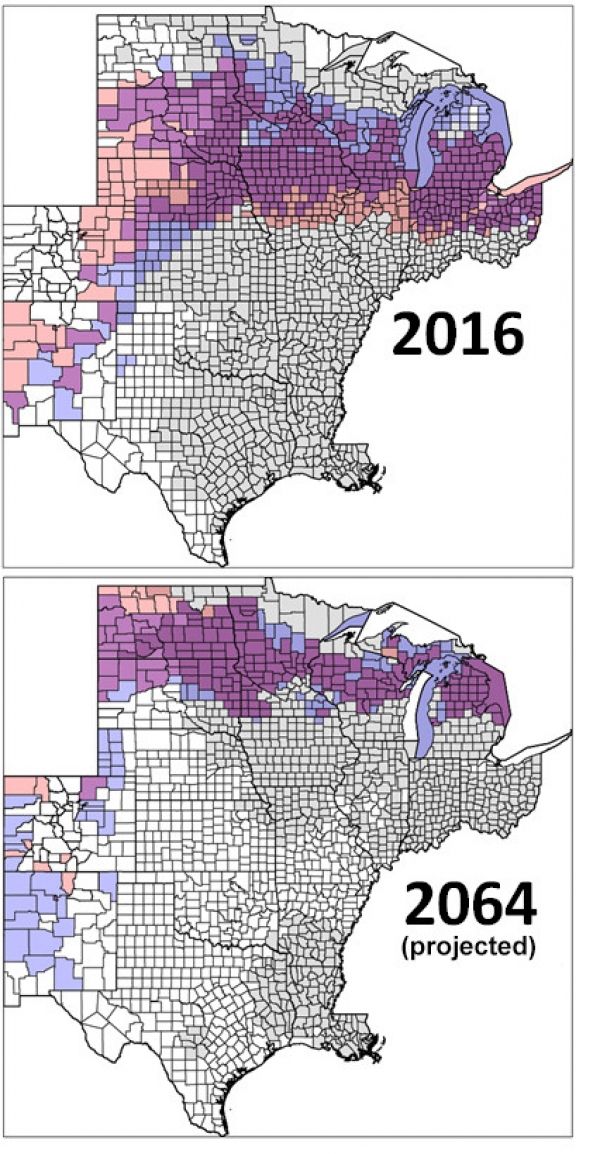If warming continues unabated in the Midwest, in 50 years we can expect the best conditions for corn and soybean production to have shifted from Iowa and Illinois to Minnesota and the Dakotas, according to Penn State researchers.
If warming continues unabated in the Midwest, in 50 years we can expect the best conditions for corn and soybean production to have shifted from Iowa and Illinois to Minnesota and the Dakotas, according to Penn State researchers.
Using machine learning — a form of artificial intelligence that enables a computer system to learn from data — the team considered more than three decades of county-level, crop-yield data from the U.S. Department of Agriculture’s National Agricultural Statistics Service for 18 states in the central region of the United States. That area produces the majority of these crops.
The researchers evaluated crop yields along with weather data. They considered fundamental climate variables to find yield predictors specific to each of the crop-growing phases. The study also analyzed the relationships between climate and corn, sorghum and soybean grain yield from 1980 to 2016.
Read more at Penn State
Image: The graphic shows the overlay of precipitation and temperature color coded to represent the best locations for corn in 2016 and in a climate scenario representative of 2064 if emissions are not curtailed. The darkest shade of purple is where temperature and precipitation align to provide the best weather for corn — for example, from northern Ohio all the way west through parts of Indiana, Michigan, Illinois and Iowa, among other states. In the projected 2060 panel, the best combination of precipitation and temperature become narrower and move north from current conditions. CREDIT: Kemanian Research Group/Penn State




